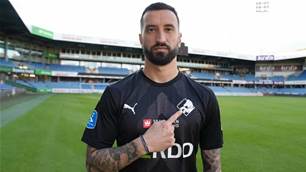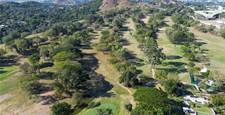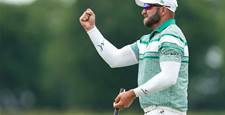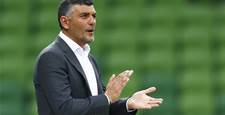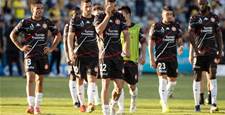OVER the past two decades Australia has been blessed with a generation of players who led the nation to consecutive World Cups. FourFourTwo takes a look at the clubs responsible for this production line of stars and whether we'll ever be able to match the talent we produced in the 'golden era'
WESTERN SYDNEY WONDERLAND
The home grounds of Marconi and Sydney United sit less than four kilometres from each other in western Sydney. And it is at Bossley Park and Edensor Park where some of Australia’s football greats honed their trade.
The Marconi Stallions, formerly known as Marconi Fairfield, are a club rich in history and tradition, with strong links to the Italian community. An example of a Marconi product is former Socceroo Steve Corica, who joined the club in 1990 after a year at the Australian Institute of Sport (AIS).
“It was a good time for me,” says Corica, who spent five seasons with the club before heading overseas. “I was in the first team straight away. It took me a year or so to break into the first eleven. I got in the national team at 19. At the time, Marconi was the best club in Australia.”
Corica was coached by the likes of former Socceroo coach Frank Arok, and his time at the club saw a golden run of talent emerge – Paul Okon, Mark Schwarzer and a young junior by the name of Christian Vieri. This talent pool would continue in the mid 1990s with a fabled Marconi junior team featuring Harry Kewell, Brett Emerton and Paul Reid. “Marconi had a good development regime,” says Corica. “It was a big club at the time. You looked up to the great players that were there. You wanted to do the best you could.”
The production line didn’t end there with Michael Beauchamp, Michael Thwaite and Alex Brosque emerging from the club years later and Bruce Djite another notable product.
Paul Saliba, Marconi’s football manager, believes the club’s rich history helped create a strong development program. “Even prior to the commencement of the first ever national competition, the Philips National Soccer League, Marconi boasted a number of stars that participated in Australia ’s first ever World Cup finals appearance in Germany in 1974.
“Football greats like Rasic, Scheinflug, Schafer, Maher, Henderson, Prskalo, Sharne, Rooney, Richards, Krencevic, Jankovics, Gray, McCulloch and Calderan all created a desire for young players to succeed.”
Marconi was a club that gave young players a chance and allowed players to express themselves on the field, Saliba says, a policy that hasn’t changed. “To know you’re at a football shrine, it makes you want to play. If you are young and you’re given a go, take it with both hands and see it as a learning experience. What we’ve been doing with the Schwarzers, we’re still doing today.”
Saliba says the efforts of Sydney United on and off the field spurred Marconi on, as the clubs are virtually side-by-side. And Sydney United, formerly Sydney Croatia, were no slouches in the player development ranks either.
Zelkjo Kalac joined the club as a thirteen year-old and came through the ranks along with Mark Bosnich, Tony Popovic and Ante Milicic. In the years that followed Ned Zelic also joined Sydney United, along with future Socceroos David Seal and Mark Babic.
For former Socceroo goalkeeper Kalac, joining the club he supported as a boy was a no-brainer. “My Croatian heritage was a big pull,” says Kalac. “It was a massive family thing. I loved it.” Kalac says he was “probably lucky in a lot of ways”, as he was taught by quality coaches such as Ron Corry and Vedran Rozic, and began training with first-team goalkeepers Steve Watson, Tony Franken and Greg Woodhouse as a 15-year old.
“It was unbelievable,” he says. “I had a lot of people who believed in me. Ron Corry was responsible for me and Mark Bosnich, it speaks volumes.” Kalac made his first-team debut as a 16-year old, and says Sydney United was a club that “wasn’t scared to play young kids”. “We were kids playing with men,” he says. “We learnt to respect your older players. We were driven to succeed.” Kalac stayed with the club until 1995 when he moved to Leicester City, before returning for another two years with Sydney United. At that time a new era of playing talent at the club was taking shape.
Like Kalac, the pull of his heritage for David Zdrilic meant it was an easy choice to join Sydney United. “It was a dream come true,” says Zdrilic, who was 19 when he joined and it was at Sydney United where his career took off.
“It was quite amazing. I never thought I’d be a professional footballer. Every year it just got better and better. It just sort of happened, which is the best. It was unbelievable the amount of talent there at the club.”
Zdrilic came under the tutelage of coaches Rozic, Branko Culina and Manfred Schafer who gave him his first opportunity. “Sydney United was a good breeding ground,” says Zdrilic, who now coaches the first team. “It was a great environment to play in, there was so many great players. A young player would never be caught dead speaking to an older player or a coach. There was so much respect. It was a perfect forum to learn.”
Coming through the club at the same time as Zdrilic was a young midfielder by the name of Jason Culina. The Socceroo joined Sydney United as a 15-year old, when his family moved from Melbourne, with his father Branko taking up a coaching role with the club. Culina came under the guidance of David Mitchell and then his father, who played him in the 1997 NSL grand final at just 16.
“It was a very close-knit club, very professional,” says Culina. “The players were dedicated and motivated to do our best, to go to Europe. Players were given their chance at the right time.” Culina says his father “copped a lot of stick” at the time for selecting him, but says he is “all for giving young players a chance”.
“He gave Mark Viduka his NSL debut [at Melbourne Knights],” says Culina. “Jacob Burns at Sydney United. The generation from the 90s, more of those players were making it at the highest level in Europe. Now, you see less of that. There was more hunger back then.” Other Socceroos that spent formative years at Sydney United include Mile Jedinak and Joel Griffiths.
MELBOURNE MAGIC
Another football club with strong links to the Croatian community is the Melbourne Knights. Like Sydney United, the Knights have always put a strong emphasis on youth development and been blessed with producing awesome talent.
The crown jewel in that production line is most probably Mark Viduka, but it doesn’t stop with the former Newcastle United, Middlesbrough, Leeds United and Celtic striker. Other players to have come through the Knights system or had key spells at the club in recent times include Steve Horvat, Joe Spiteri, Danny Tiatto, Lubjo Milicevic, Matt Spiranovic, Adrian Leijer, Frank Juric, Ante Juric and Tom Pondeljak. Joey Didulica and Joe Simunic also played for the Knights, but both opted to play for Croatia instead of the Socceroos.
A young Jason Culina was also at the club and its feeder team St Albans as a junior, from the ages of 10 to 14. “It was great,” says Culina. “It was a very family-orientated club, very welcoming.”
Knights president Ange Cimera says the club was somewhat lucky, but has always focused on development and cites the influence of Croatian coach Mirko Bazic.
“He spotted the likes of Danny Tiatto, who no-one else wanted,” says Cimera. “We’ve always had good youth programs. We’ve always given young players a go; we give them a chance to develop. We’re still big on youth today.”
Apart from their role in developing a realm of Socceroos in the past 20 years, the Knights are still producing players, such as Melbourne Victory striker Mate Dugandzic. Cimera believes despite more money going into development today, the quality of players being churned out is not as high as it was in the 1990s.
“We’re the ones spending money and time on these kids,” says Cimera. “All the A-League players are developed by Premier League and lower league clubs. It’s a big, big miss. The A-League has been great, but the clubs still need Band Aids to keep them together. Unfortunately they have no junior sets up and developments. The youth league is only very new. I think it’s why soccer in this country is going backwards.”
Across town in Melbourne sits Bob Jane Stadium, overlooking Albert Park. This is home of South Melbourne FC and like its long-time cross-city rivals, another treasured production line of footballing talent.
Brisbane Roar coach Ange Postecoglou spent many years at South Melbourne, starting off as a nine-year old junior before progressing to the first-team, where he made nearly 200 appearances, and then becoming coach in 1996. Postecoglou says one of the reasons the Greek-associated South Melbourne was so successful in developing players was because of the coaching and the culture of the club.
Continued on next page...
Related Articles
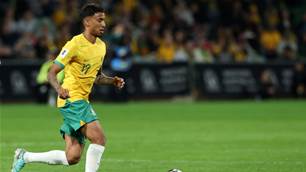
Socceroos midfielder embraces move to England
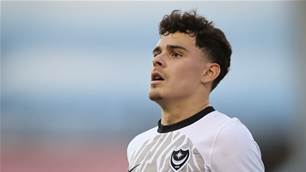
Cardiff City snap up sought-after Socceroos starlet
